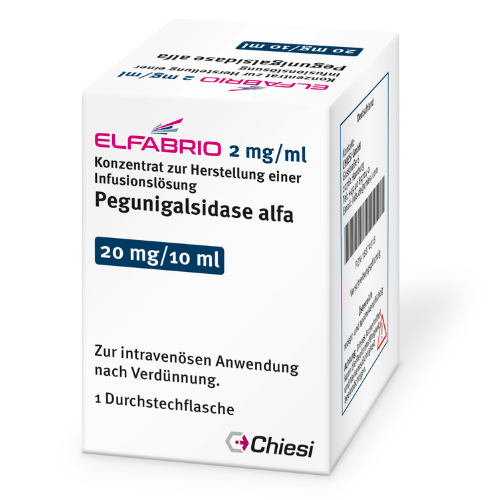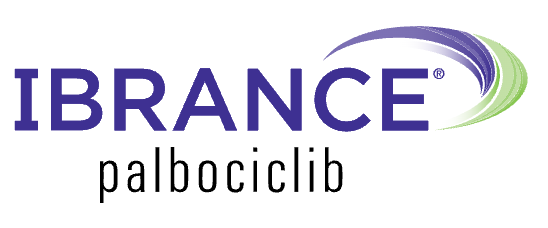Introduction

Elfabrio (pegunigalsidase alfa-iwxj) is a medication used for the treatment of Fabry disease in adults. Elfabrio was approved by the FDA on May 10, 2023, for the treatment of adults with confirmed Fabry disease. Elfabrio is manufactured by Chiesi Global Rare Diseases, a biopharmaceutical company headquartered in Italy.
Indication
Elfabrio is an enzyme specifically targeting hydrolytic lysosomal neutral glycosphingolipids. It is approved for treating confirmed Fabry disease in adults.
Mechanism of Action
Elfabrio is an enzyme replacement therapy that works by replacing the missing or deficient alpha-galactosidase A enzyme in patients with Fabry disease. This enzyme is responsible for breaking down Gb3, and its deficiency leads to the accumulation of Gb3 in various organs and tissues.
What is Fabry Disease?
Fabry disease is a rare genetic disorder that results from the buildup of a particular type of fat, called globotriaosylceramide (Gb3 or GL-3), in various cells and organs of the body. This accumulation is due to the deficiency or absence of an enzyme called alpha-galactosidase A (α-Gal A), which is responsible for breaking down Gb3.
Some common symptoms include:
- Numbness, tingling, burning, or pain in the hands or feet
- Extreme pain during physical activity
- Clusters of small, dark red spots on the skin called angiokeratomas
- A decreased ability to sweat (hypohidrosis)
- Cloudiness or streaks in the front part of the eye (corneal opacity or corneal verticillata)
- Problems with the gastrointestinal system
- Ringing in the ears (tinnitus) and hearing loss
- Heart enlargement
- Progressive kidney impairment leading to renal failure
- Gastrointestinal difficulties
- Decreased ability to sweat
- Cerebrovascular complications
Dosage Information
The recommended dosage of pegunigalsidase alfa-iwxj injection is based on the patient’s clinical status and should be determined by a qualified healthcare professional. The medication is administered via intravenous infusion, and the dosing regimen may involve a step-up dosing schedule to reduce the incidence and severity of infusion-associated reactions.
- The suggested dosage is 1 mg/kg every 2 weeks, administered intravenously.
- For specific instructions on preparation, including dilution, storage, and administration rates, especially for the initial 4-6 infusions in both ERT-experienced and ERT-naïve patients, consult your doctor.
Drug Interaction
Drug interactions between Elfabrio and other medications have not been well studied. Before initiating the treatment patients should consult their healthcare provider for a comprehensive understanding of potential drug-drug interactions and their management.
Usage in Specific Populations
- Pregnancy: The safety and effectiveness of Elfabrio in pregnant women have not been established. Women who are pregnant or planning to become pregnant should consult their healthcare provider before starting Elfabrio treatment.
- Lactation: It is not known whether Elfabrio is excreted in human milk. Women who are breastfeeding should consult their healthcare provider before starting Elfabrio treatment.
- Pediatric and Geriatric Populations: The safety and effectiveness of Elfabrio in pediatric and geriatric populations have not been established, and its use in these populations is not recommended.
Side Effects
The most common side effects of Elfabrio may include infusion-associated reactions, including hypersensitivity, nausea, chills, pruritus, rash, chest pain, dizziness, vomiting, asthenia, pain, sneezing, dyspnea, nasal congestion, throat irritation, abdominal pain, erythema, diarrhea, burning sensation, neuralgia, headache, and paresthesia. These are not all the possible side effects, and patients should consult their healthcare provider for a comprehensive understanding of potential adverse reactions and their management.
How To Store Elfabrio?
- After preparing the Elfabrio solution, if not used immediately, there are specific storage recommendations. The diluted solution can be refrigerated at temperatures between 2°C to 8°C (36°F to 46°F) for a maximum of 24 hours.
- If stored at room temperature (20°C to 25°C or 68°F to 77°F), the solution remains viable for up to 8 hours. It is crucial to ensure that the solution is infused within 8 hours after removal from the refrigerator or room temperature, inclusive of the entire infusion time.
- Any unused solution beyond these timeframes should be discarded. Importantly, freezing or shaking the diluted Elfabrio solution is strictly contraindicated.
How To Buy Elfabrio Online?
Obtaining Elfabrio has been made hassle-free through online channels, particularly for those in the US and Europe. To initiate the process, you can reach out to the SANSFRO team or other reputable firms with expertise in importing medications from these regions.
For information on Elfabrio price in the India and details on procurement, feel free to contact our dedicated Patient Support Team at (+91) 93157 05373 or through email at help@sansfro.com. Our team is committed to providing accurate and up-to-date cost information for Elfabrio in the Indian market. Ensure a smooth experience accessing this essential medication by connecting with our trusted services.
Conclusion
Elfabrio represents a significant advancement in the treatment of Fabry disease, offering a targeted therapeutic option for patients facing this challenging condition. Patients should consult their healthcare provider for personalized advice and comprehensive information on the use of Elfabrio.
FAQs
1. What is ERT, and why might patients switch to Elfabrio?
ERT stands for Enzyme Replacement Therapy, a treatment for certain genetic disorders. Patients may switch to Elfabrio, pegunigalsidase alfa-iwxj, due to various reasons, such as treatment preferences or a need for a different therapeutic approach.
2. What are anti-drug antibodies (ADA), and how do they relate to switching therapies?
ADA refers to antibodies that the body may produce against the therapeutic enzyme. Patients with prior ERT may have pre-existing ADA, potentially impacting the effectiveness of Elfabrio.
3. How should Elfabrio be prepared for administration?
Elfabrio should be diluted using aseptic technique. The number of Elfabrio vials needed should be determined based on actual body weight, and the solution should be diluted in 0.9% Sodium Chloride Injection. The diluted solution can be refrigerated or stored at room temperature for specific durations, and it must be used within the specified time or discarded. Importantly, the solution should not be frozen or shaken.
4.What is the recommended indication for Elfabrio use?
Elfabrio is indicated for the treatment of adults with confirmed Fabry disease.
5. What is the recommended dosage and administration schedule for Elfabrio?
Elfabrio is recommended at a dosage of 1 mg/kg via intravenous infusion every 2 weeks.
Reference:
- https://www.accessdata.fda.gov/drugsatfda_docs/label/2023/761161s000lbl.pdf
- https://www.primetherapeutics.com/news/specialty-drug-pipeline-update-may-2023/
- https://chiesirarediseases.com/media/fda-approval-of-Elfabrio
- https://www.pahealthwellness.com/providers/resources/clinical-payment-policies.html



